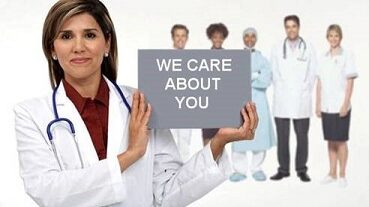I have worked with hospitals, pharmaceutical companies, outpatient services and medical professionals for more than 30 years. I thought I really KNEW the healthcare industry.
But, I learned more during the past seven months than in all the 30 years before.
In May, ruptured discs pinched nerves in my back and literally drained all strength from the quadriceps muscles in my left leg. Three days after surgery, while dutifully doing my walk therapy, I stumbled and immediately depended on my “good” right leg to steady me. Evidently, one of the seven pre-MRI falls had damaged or stretched my right knee. Instead of steadying me, the Patellar tendon in my right knee ripped apart in multiple places. My knee cap was yanked into my thigh and a sunken hole replaced my previously dependable knee joint. Ouch.
As I laid on the ground suffering, I knew my wife was (now) right. I did not have a leg to stand on….
But, this became the first day of my real on-the-job healthcare training – as a patient.
Based upon my first seven months of first-hand experience, here are four key learnings and observations:
- Good medical insurance is amazing. I admit, understanding the 47 different invoices I have received for equipment and services rendered have been a bit complicated. But with patience and a good customer service representative, your insurance company can become your partner. I am sure my medical insurer lost tons of money on me this year. Healthcare providers charged me more than $100,000. The insurance company paid more than $60,000 and I paid $3,000 out of pocket. That is probably the most valuable money I have ever spent. I have never been a bigger fan of the Affordable Care Act (or any steps that provide legitimate insurance for more people). In the past 15 months, 15-30 million Americans have become eligible for legitimate health insurance under the ACA.
- The Emergency Room is NOT the answer to better healthcare delivery. After four hours and a dozen interruptions, a nice PA “discovered” that I had not received X-rays yet. Two hours later and a shift change by the ER employees, I was “released to go home and visit my normal orthopedist the next day.” Remember, I had no working legs at this point. I was totally immobile. Going home and returning the next day was not an option. Embarrassed by this realization, another PA promised to find someone who could admit me to the hospital. Two more hours later – about 8.5 hours in all – I was rolled to a hospital room. And, the cost for this wonderful ER experience? Let’s just say that I spent less for Christmas for our entire family over the past two years. It is illogical for the ER to be the primary entry point to our country’s health network for the underprivileged and those without health insurance. According to the CDC, in 2011, that was about 20% of all American adults. Fortunately, that number is dropping.
- Nursing is a “calling”. There are hundreds of thousands of dedicated nurses who gain fulfillment from helping their patients. Although some were complainers and some stayed “hidden” for most of their shifts, I have nothing but respect and appreciation for most of the nurses I encountered. It is too bad that there is not a test nurses can take to measure their “care quotient or helpfulness propensity”. Is there such a thing? Many reports suggest there is a need.
- Physical Therapists are my new best friends. I used to think occupational and physical therapists’ primary role was to see how many therapy sessions they could “milk” out of each injury. But that was before my 49 formal PT and OT sessions – inpatient, outpatient and at home. My therapists – probably more than anyone else – can be credited with my growing mobility today. They pushed me. They addressed my frustrations. They guided me down a path of recovery. And, they smiled and encouraged me. Because of two therapists in particular, I now have 75% of my strength in my left quadriceps and almost 80% of my strength and mobility in my right knee.
These are four of my initial observations. I’ll share more in coming posts. What observations do you have? I hope you will share them via the “comments” section below or my email address.
Here’s to healthy legs to stand on (and a better understanding of healthcare delivery).
Photo credit: TeleTracking Blog

